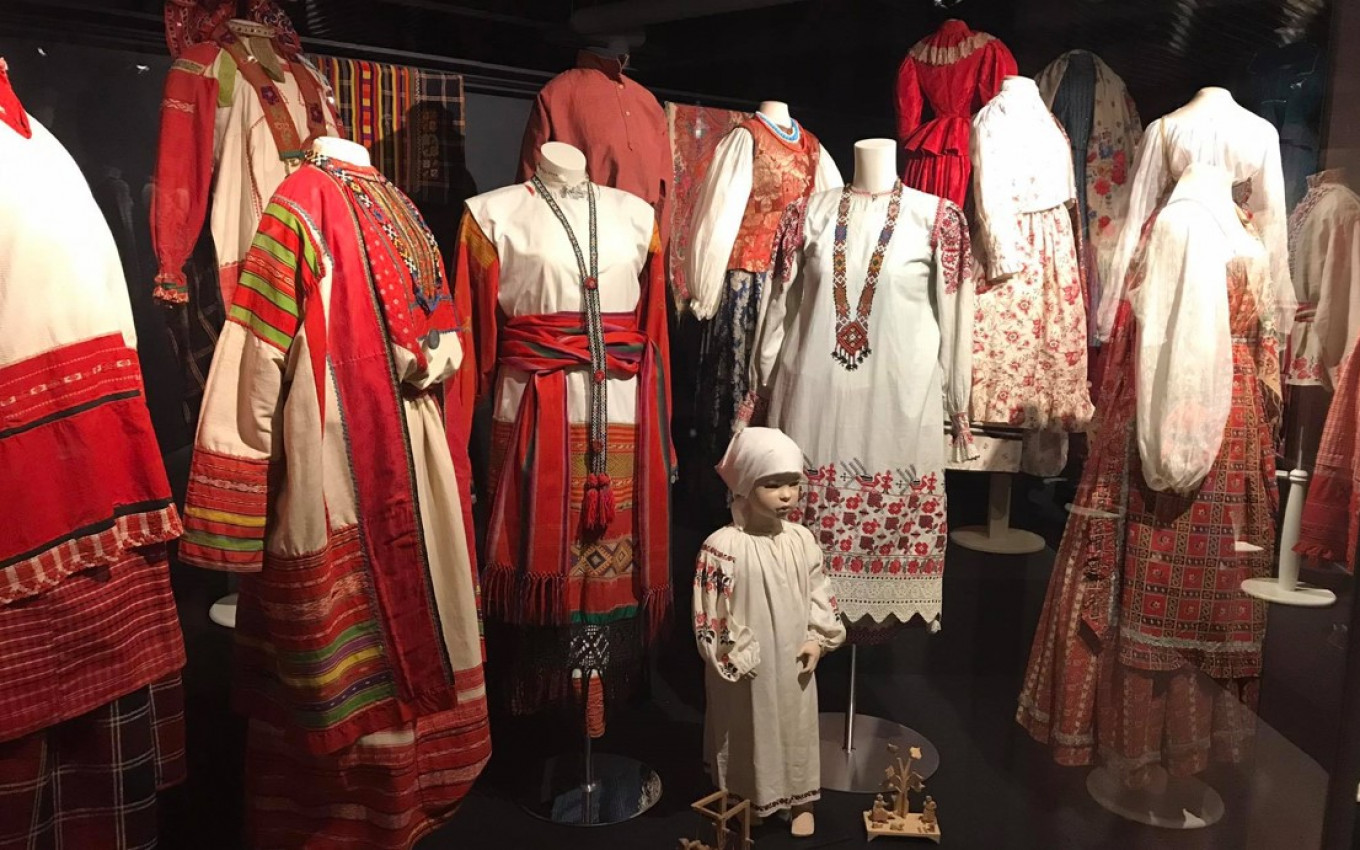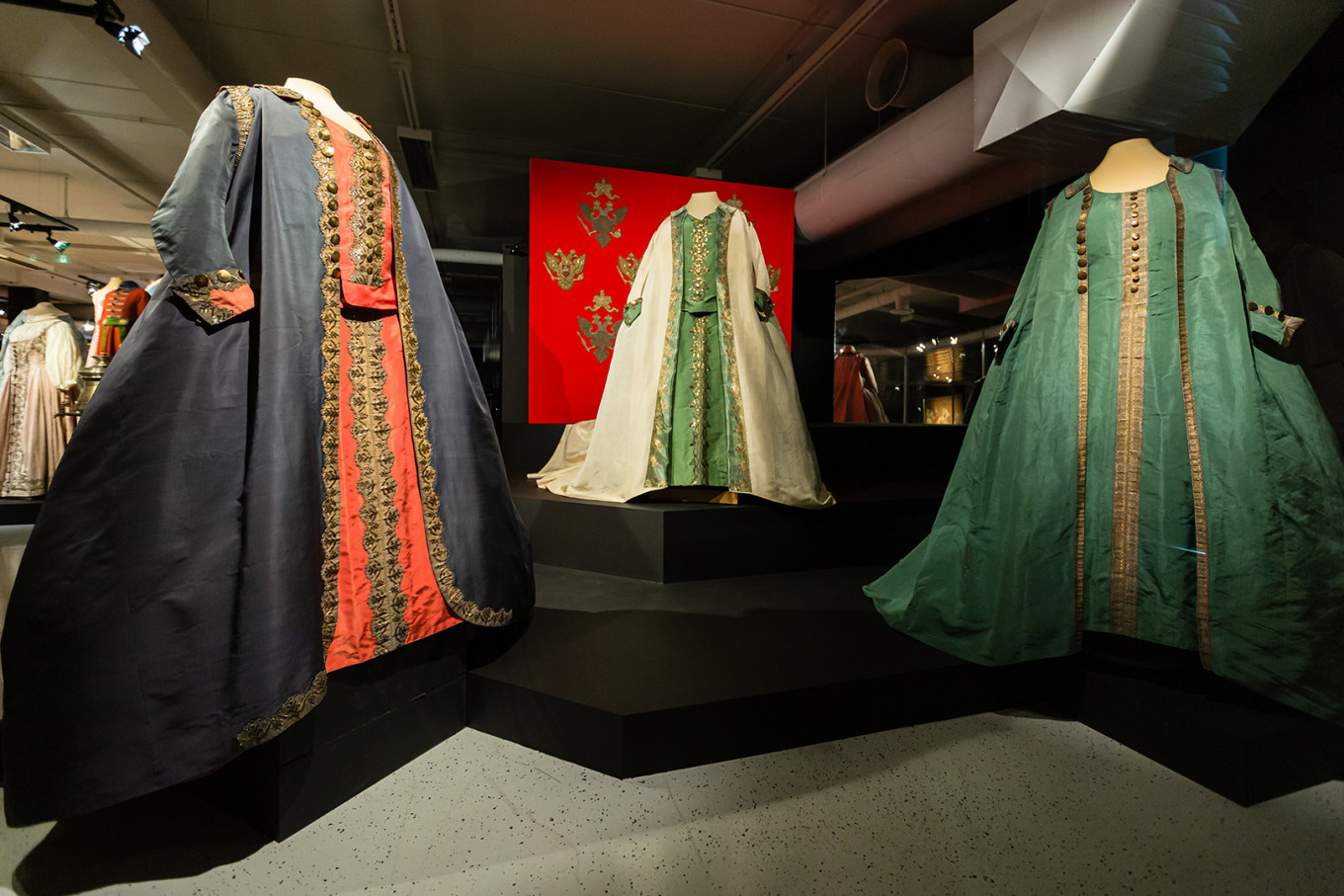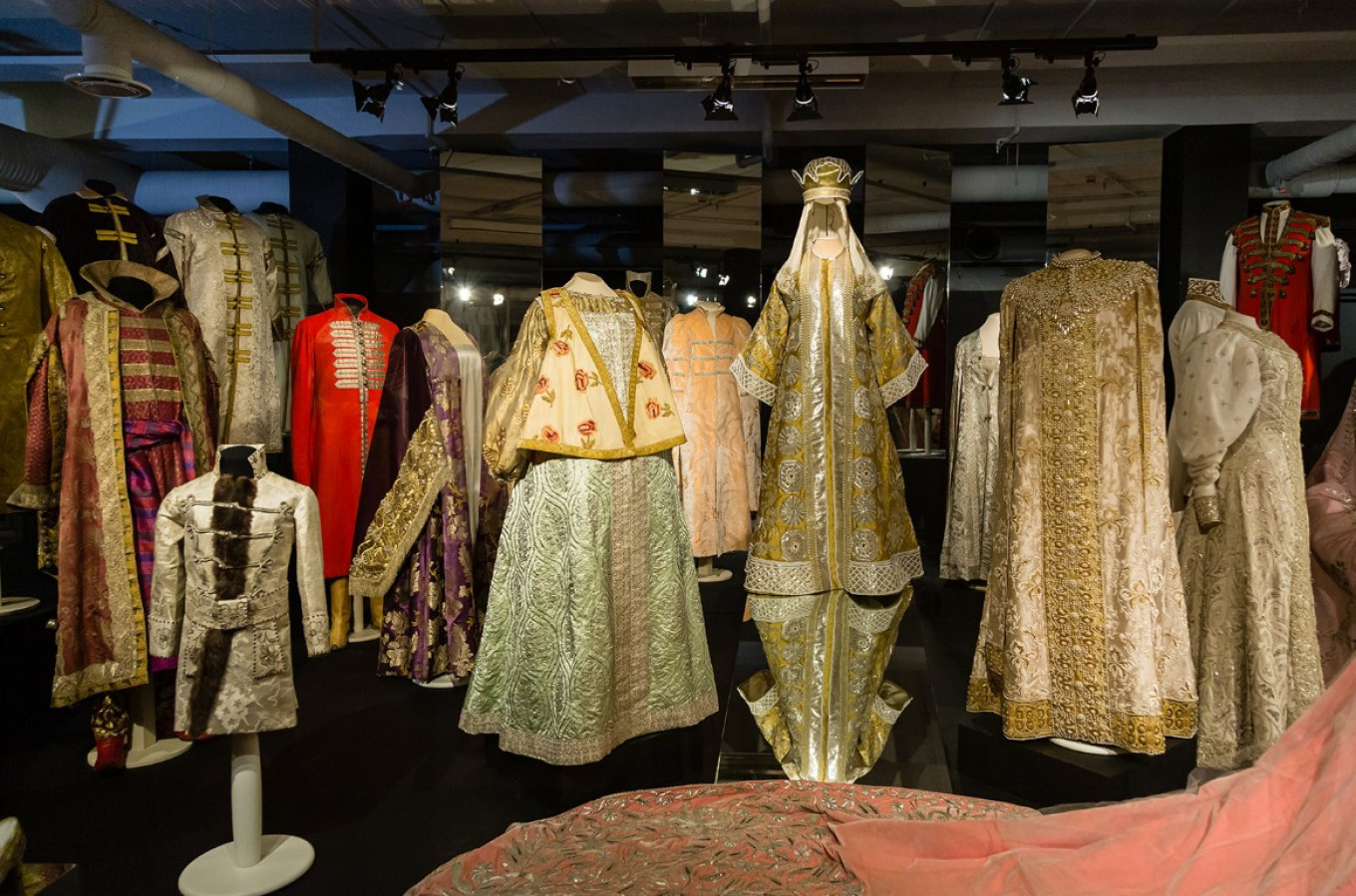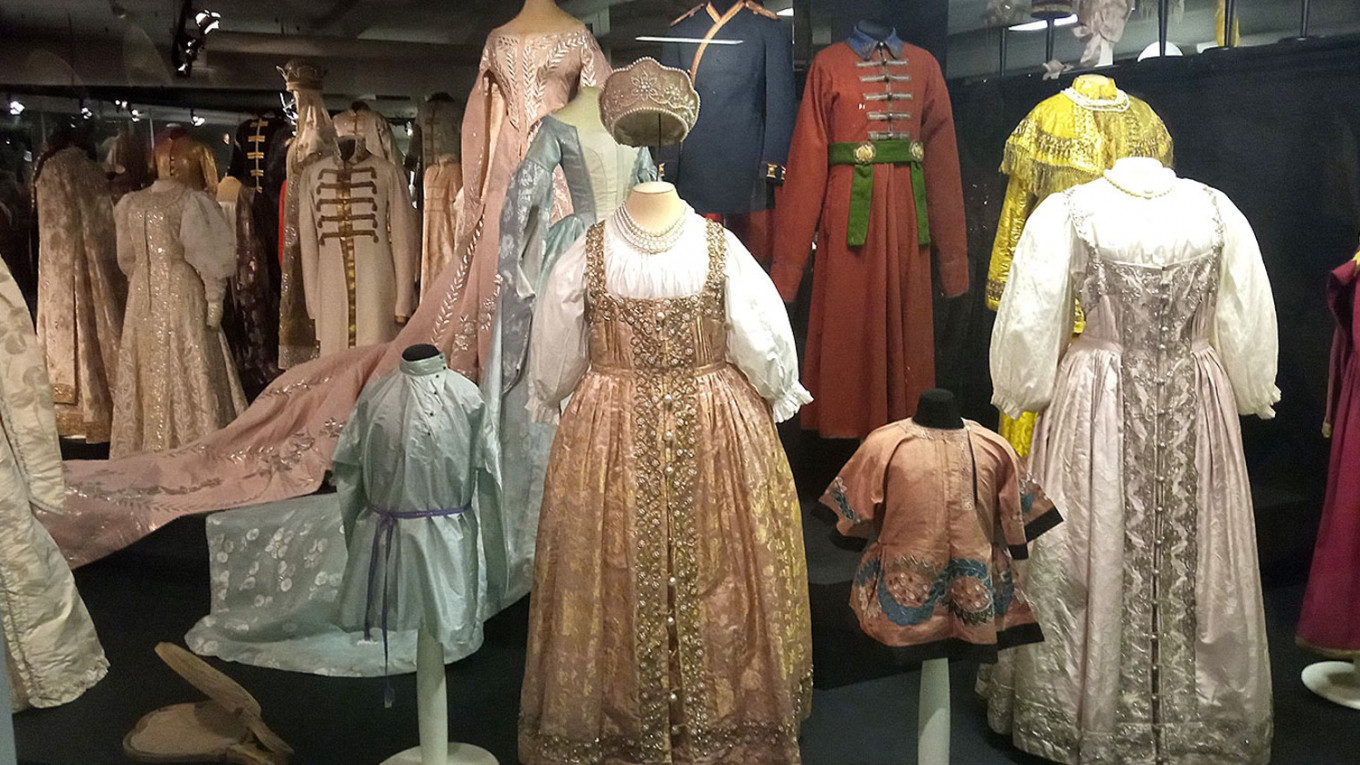Embroidered silver plumes of gala dresses and sumptuous kokoshniki lavishly embroidered with pearls... fine brocade dresses of the Tsar's ladies in waiting and couture dresses of contemporary Russian designers... ecclesiastical garments and exquisite royal outfits from the famous 1903 Winter Palace costume ball — the evolution of Russian fashion comes alive as more than a hundred outfits from the Hermitage collection unveil their precious stories.
The exhibition called "Russian Style: Traditions and Transformations” now on display at the Hermitage’s Staraya Derevnya Restoration and Storage Center brings together centuries of Russian clothing. The earliest examples from the folk costume collection date from the second half of the 13th century, and the latest ones were made in the early 20th century, when traditional clothing largely gave way to modern dress.
The exhibition is designed as a dialogue between traditional folk costume and tailor-made ceremonial and gala outfits inspired by classical folk traditions. The showcases on the left side tell the history of folk costume and its variations in different Russian provinces, and the showcases on the right display court and fashionable attire.

The most Russian of German rulers
The exhibition opens with an impressive regal trio of uniforms of Catherine the Great: the uniform of the Semyonovsky and Konnogvardeysky regiments and the uniform of the admiral of the Russian fleet. Catherine wore the admiral’s uniform when she attended ceremonies to launch ships or celebrate the victories of the Russian fleet.
As early as the 1770-80s the far-sighted empress recognized the strong potential of folk elements in costume. She worked hard to integrate them in the court fashion and wardrobe. Catherine II used costume to strengthen her personal power, communicate with diplomats, and promote the military and political agenda of the Russian state.
“We begin the exhibition with Catherine the Great because she was the first Russian monarch to appreciate the immense political power of costume, particularly its folk elements," Nina Tarasova, curator at the Costume Gallery and head of the Applied Art Section of the Hermitage's Russian Cultural History Department, told The Moscow Times. "For example, the Empress wore a uniform when she went to Friedrichsgem in 1783 for difficult negotiations with Gustav III, King of Sweden. She chose to wear a uniform, knowing perfectly well that Gustav could not stand military uniforms, which were even banned at his court. Gustav had sent a large military contingent to the Russian border a few months before the meeting. Catherine simply came to the meeting in the uniform of the Preobrazhensky Regiment of the Life Guards.”

It was Catherine who introduced sundresses, kokoshniki, and long flap sleeves to the Russian court. As a princess of German origin, and someone who ascended the throne as a result of imperfect political maneuvering, the empress sought opportunities to broadcast her affinity to Russian culture and traditions. Largely thanks to her efforts, elements of Russian folk costume were blended naturally with the court’s traditional styles, as can be seen in the gala court coats of the 1830s-1900s, the intricate costumes of court nurses and court singers, as well as military and livery coats and the Russian-style ball costumes.
The most luxurious folk costumes in the Hermitage collection were created by artisans of the Russian North and North-West Russia, Tarasova said, where fur, river pearls and mother-of-pearl were in abundance and there were strong traditions of lacemaking and embroidery.
"Just look at the women’s pointed caps from Pskov embroidered with the tiniest river pearls: it is incredible how fine the tools must have been to make holes in those tiny pearls — several times smaller than a matchstick in diameter," the exhibition curator said. "I have to admit that modern restorers have a hard time restoring such items because it is almost impossible to find such small freshwater pearls these days."

Secrets hidden and found
Some dresses have been keeping secrets for many decades. When the restorers were preparing for the show, they found a fuchocolate candy hidden in the sleeve hem of the ball dress which Grand Duchess Ksenia Alexandrovna wore to the 1903 costume ball at the Winter Palace.
Another team of restorers found a letter sewn into the lining of the sleeve of an exquisite blue and gold costume originating from one of the northern provinces of the late 19th-early 20th century.
“When the restorer first touched a blue dress embroidered with gold flowers, she thought one of the sleeves felt a bit stiffer than the other," Tarasova said. "She slit the threads closing the sleeve and pulled out a letter from the lining that the owner’s husband, who had gone away for work, had written to her. In the letter, he passes on greetings to his family and sends money to his wife and children. The woman spent the money, but she sewed the letter into the lining to keep it close to her heart.”
The original letter is now kept in special storage, and a copy has been sewn back into the sleeve. Also kept separately is the chocolate candy that the Grand Duchess nibbled on during a ball.

Gowns galore
One of the most breathtaking sections of the exhibition is devoted to the so-called "Russian gowns" that became part of the ceremonial life of the Russian imperial court in the 19th century. The absolute gem of the Hermitage collection is a collection of magnificent costumes from the famous costume ball held in the Winter Palace in 1903. The dresses and gowns were all designed in the style of the Russian traditional costume of the times of Tsar Alexei Mikhailovich. Only 12 costumes from that ball have survived over the years. Ten of them belong to the Hermitage and are now on display at the exhibition.
While work on the exhibition was in progress, curators were able to discover the designer of the gown worn by Countess Natalia Karlova at the 1903 ball; it was made in the Moscow atelier of the designer Nadezhda Lamanova.
Rounding out the exhibition are fabulous outfits created from the 1980s through the 2000s by contemporary Russian fashion designers Vyacheslav Zaitsev, Yanis Chamalidy and Stas Lopatkin that were inspired by traditional Russian clothing.
Two weeks before the opening of the Costume Gallery, the Hermitage received a gift of a handmade women's costume. Titled "One Absolutely Happy Village,” it was knitted and crocheted in 1999 by the Moscow master and knitwear designer Lyudmila Dobrokhotova, who passed away in 2012. The costume was donated to the Hermitage by Lyudmila's friend, designer Elena Suprun.
"It took her 1,500 hours of meticulous handwork to create the costume, which is made of 52 shades of mohair thread — and you won't be able to find a single knot on the inside," Tarasova said. “This very soulful piece is the perfect finale to the contemporary part of the exhibition. Everyone smiles when they look at it.”
More information about the exhibition can be found here.
A Message from The Moscow Times:
Dear readers,
We are facing unprecedented challenges. Russia's Prosecutor General's Office has designated The Moscow Times as an "undesirable" organization, criminalizing our work and putting our staff at risk of prosecution. This follows our earlier unjust labeling as a "foreign agent."
These actions are direct attempts to silence independent journalism in Russia. The authorities claim our work "discredits the decisions of the Russian leadership." We see things differently: we strive to provide accurate, unbiased reporting on Russia.
We, the journalists of The Moscow Times, refuse to be silenced. But to continue our work, we need your help.
Your support, no matter how small, makes a world of difference. If you can, please support us monthly starting from just $2. It's quick to set up, and every contribution makes a significant impact.
By supporting The Moscow Times, you're defending open, independent journalism in the face of repression. Thank you for standing with us.
Remind me later.






